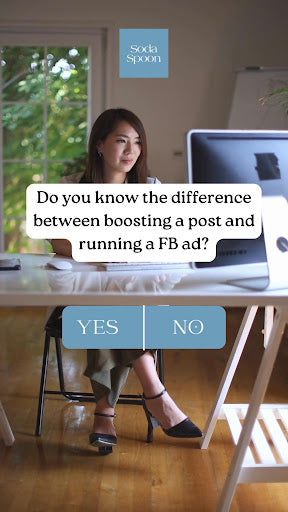Key takeaways
- Market research helps you identify a niche to attract potential customers
- Outline your startup costs and monthly expenses to ensure you’re financially set before launch
- Design a cohesive jewelry line to stand out and attract your target audience
The right jewelry can pull together any outfit and help wearers walk with their heads held high. From metalworking to polymer clay design, jewelry making is a craft that lets both the maker and wearer display their creativity.
If you’re dreaming of selling your work on a wider stage, now is the right time to learn how to start a jewelry business. The jewelry industry is worth nearly $60 billion and set to grow every year through 2026, with plenty of opportunities for local artists to tap into a flourishing market.
However, building a successful company takes more than a knack for jewelry design. Whether you start an online jewelry business or open a brick-and-mortar store, you need to create a strategy to grow a loyal customer base and stand out from the competition. Use this step-by-step guide to start building the successful jewelry business of your dreams.
1. Find your jewelry business niche
Choosing a niche is essential to building a memorable brand. Your jewelry store can’t be everything for everyone, so consider focusing on a specific type of jewelry, be it a specific aesthetic or material.
The most famous jewelry brands (like Cartier and Tiffany & Co.) monopolize the fine jewelry niche with pieces made from precious gemstones and precious metals. But there are plenty of other jewelry market segments that homegrown artists can serve. In fact, 70% of watch and jewelry sales are for non-luxury purchases. For example, you can build a successful business selling vintage pieces, handmade earrings, or costume jewelry (affordable pieces made from inexpensive or imitation materials, such as brass or cubic zirconia).
Conduct market research to determine what your competitors offer, as well as the type of jewelry your target market prefers. This will help you find a specific niche, such as:
- Custom, made-to-order jewelry
- Beaded necklaces and bracelets
- Wedding jewelry
- Body and facial piercings
- Men’s jewelry
- Handmade jewelry
- Sustainable fine jewelry
2. Identify your target audience

When starting a jewelry business, you must first identify a target audience—the people you sell and market to. Create a few client personas, or profiles that represent different segments of your customer base, that include insights, such as:
- Demographic information: distinct personal attributes, including age, gender, income level, and education level
- Location: the country, region, and community type (e.g., urban or rural) where your client lives
- Needs: the goals and challenges facing your client when making a jewelry purchase
- Psychographic information: notable hobbies, interests, and values as well as how your client makes purchasing decisions
Customer personas will help you form an effective marketing strategy and make better decisions as you continue building your new business.
3. Create your business plan
Now that you know what direction you want to take with your small business, start writing your business plan. Your business plan is a road map for your company’s future, which outlines how you’ll start and grow your jewelry business long term. You can continue solidifying your plan before you launch, but you should finalize these key details early on, especially if seeking funding:
- Your business name
- The type of jewelry you’ll sell
- Your business structure (e.g., limited liability company, S corporation)
- Your business location or ecommerce marketplaces where your goods can be found, such as Etsy, eBay, Amazon, or your own Shopify store
- Your financial strategy
To develop your financial strategy, list all of the startup expenses you will incur while launching your business, including the cost of jewelry-making tools and business filing fees. Next, list your business’s monthly expenses, including the cost of rent, raw materials or inventory, credit card processing fees, and marketing materials.
Itemizing your expenses will help you determine how much outside financing you need to launch your own jewelry business.
4. Register your business
To start selling jewelry, most business owners need to register their business with their state agency. You must complete the process on your agency’s website and pay a filing fee to start operating your business legally. However, entrepreneurs who operate sole proprietorships or partnerships can skip the business registration process.
Regardless of your business structure, all business owners can apply for an Employer Identification Number (EIN) through the IRS. Though the IRS only requires EINs for corporations, partnerships, and companies with employees, an EIN can help you access business bank accounts and loans.
Finally, check with your state agency, city government, or county government to determine if they require additional business licenses or permits for jewelers.
5. Design your first jewelry line

After you register your business—or while you wait for the paperwork to finalize—start designing your first pieces of jewelry. As you create each piece or buy inventory for your store, attempt to curate a cohesive product line you can market as a whole. This will help your products stand out and give your potential customers a taste of your brand.
Once you have inventory, start setting price points for your products. Consider your production costs, including labor and raw materials, as well as your customer personas. While you want to sell your jewelry at a markup, you also want to align your price point with your ideal customer’s needs and behavior.
Next, start setting up your jewelry store. If you’re opening a brick-and-mortar store, showcase your jewelry using well-organized display cases or rotating jewelry racks, sorting by color or design. Highlight your best jewelry products or trending items on jewelry display busts—especially at the front of your store—to capture the attention of visitors and window shoppers. Additionally, remember to set up mirrors around your store so visitors can envision themselves in your jewelry.
If you’re running an online store, take high-quality, close-up photos of your products for your site. For professional-looking product shots, clean the jewelry and position it against a white background (or a clean, uncluttered space). Make sure to use a high-quality camera, such as a DSLR, and consider investing in lighting equipment, including a tripod to prevent camera shake, a lightbox to illuminate the smaller items, and/or bounce cards to reflect light. Avoid overhead fluorescent lights or using a window as your sole light source.
6. Market your jewelry business
Your business is ready to start selling. The final step is attracting potential customers. Marketing is crucial to building your brand personality and reputation and will help you stand out from your competitors.
Solidify your marketing plan by outlining how you will use different channels to reach your target audience. Some examples of strategies you can use include:
- Hiring influencers to share your brand on their social media accounts so you can grow your own social media engagement and build trust
- Claiming your Yelp Business Page to show off your product shots and reach customers already searching for jewelry stores in your local area
- Using search engine optimization (SEO) techniques to drive traffic to your online shop
- Building your contact list to promote opening week deals through email marketing
Build the jewelry business of your dreams
Selling jewelry requires as much business savvy as it does artistry. Whether you want to launch your own online store or open a brick and mortar, knowing how to start a jewelry business starts with finding your niche and target audience.
As your business plan becomes a reality, learn how to attract more customers with online marketing tactics for your small business.




